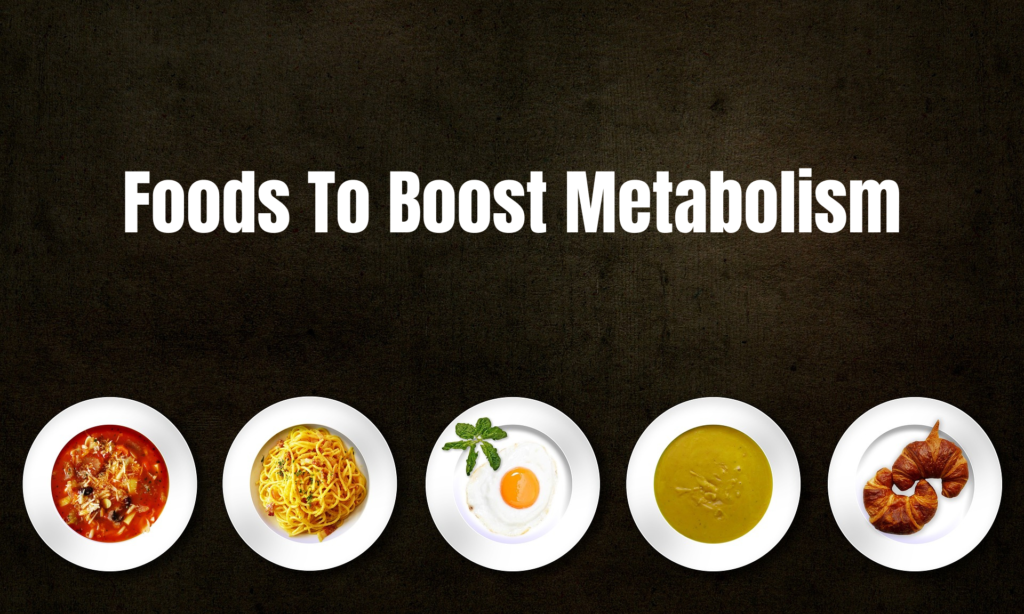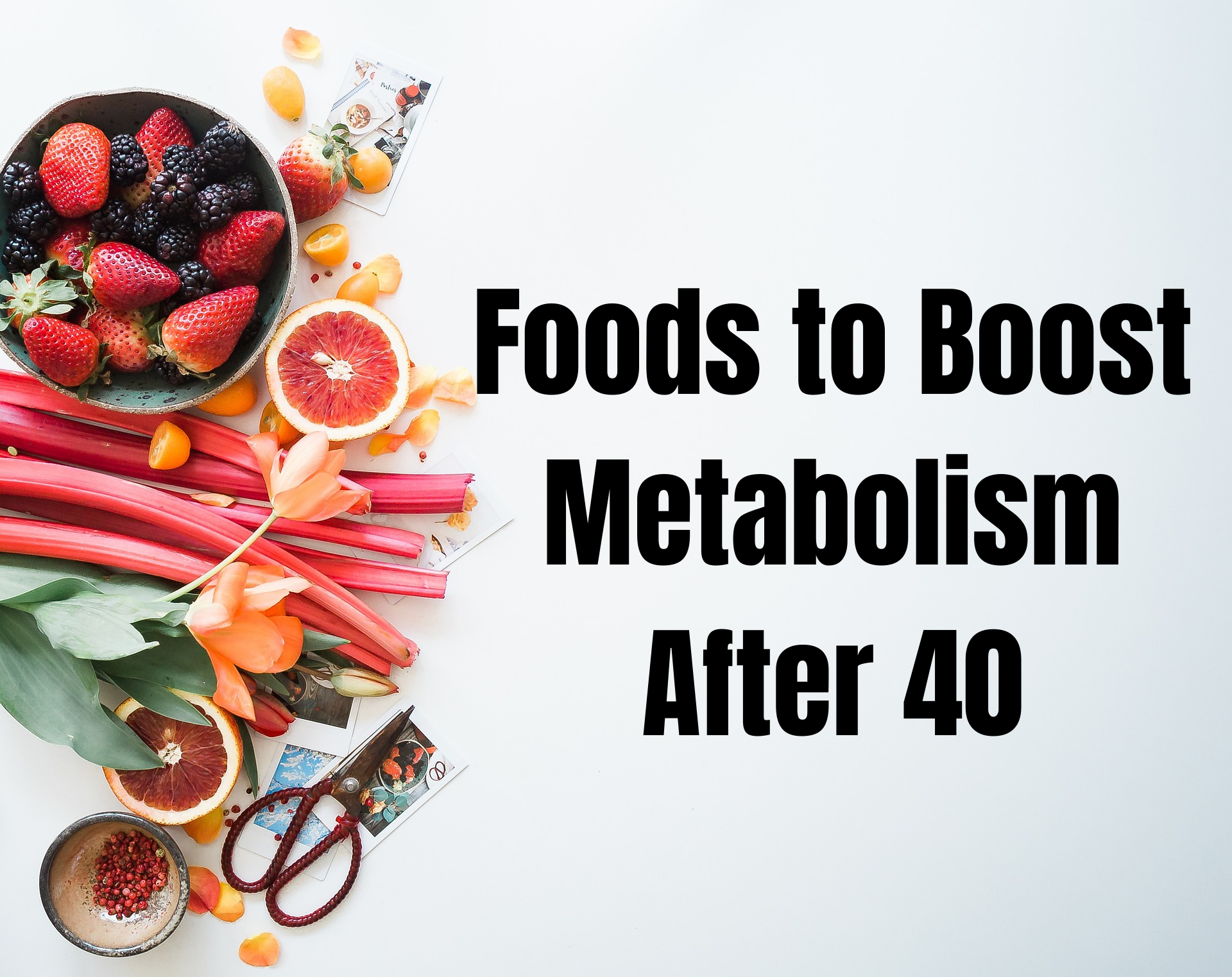As you age, you may notice changes in your energy levels, weight, and overall health. One of the biggest culprits behind these changes is your metabolism, which tends to slow down after the age of 40. This decline can make it harder to maintain a healthy weight and energy balance. Understanding the changes in your metabolism after 40 and knowing how to boost it can help you stay healthy, energized, and fit.
In this guide, we’ll explore how your metabolism changes with age, why it slows down after 40, and the foods to boost metabolism after 40 to keep it running efficiently. Let’s dive in!
Table of Contents
What Is Metabolism?
Metabolism is a complex biochemical process that occurs in every living organism, including humans, to maintain life. At its core, metabolism refers to all the chemical reactions and processes that take place within your body to convert food and nutrients into energy. This energy is then used to power various bodily functions such as breathing, circulating blood, maintaining body temperature, growing and repairing cells, and even thinking.
In simple terms, metabolism is the engine that drives the body’s ability to function. It includes two key components:
1. Catabolism (Breaking Down)
Catabolism is the process where your body breaks down the nutrients in food (like carbohydrates, fats, and proteins) into smaller units to release energy. This energy is essential for performing daily activities and maintaining vital body functions.
- Example: When you eat carbohydrates, they are broken down into glucose (sugar) that your body can use as fuel. If your body needs immediate energy, glucose is used right away. If not, it is stored for later use.
2. Anabolism (Building Up)
Anabolism is the opposite of catabolism. It is the process where your body uses the energy from the food you eat to build and repair tissues, synthesize proteins, and grow cells. This process is essential for muscle growth, tissue repair, and maintaining a healthy body structure.
Example: After you eat protein-rich foods like meat, eggs, or legumes, your body breaks them down into amino acids, which are then used to build new proteins for muscle repair and cell growth.
Why Does Metabolism Slow Down After 40?
Several factors contribute to the decline in metabolism as you age. Below are some of the key reasons:
1. Muscle Mass Decline
- Why it happens: Muscle mass is metabolically active, meaning it burns more calories than fat. After 40, you begin to lose muscle mass, a process known as sarcopenia.
- Effect: Less muscle mass results in fewer calories burned, even while at rest, slowing your metabolism.
2. Hormonal Changes
- In women: The onset of perimenopause and menopause leads to a drop in estrogen levels, which affects fat distribution and metabolism.
- In men: A decline in testosterone levels reduces muscle mass and metabolic function.
3. Reduced Physical Activity
- Why it happens: Aging often comes with joint pain, fatigue, and a busier lifestyle, reducing the amount of exercise you get.
- Effect: Less movement means fewer calories burned, further slowing metabolism.
4. Changes in Caloric Needs
- Why it happens: As muscle mass decreases and physical activity declines, your body requires fewer calories.
- Effect: Consuming the same number of calories as before can lead to weight gain.
5. Insulin Sensitivity and Blood Sugar Control
- Why it happens: After 40, insulin sensitivity decreases, making it harder for your body to use glucose effectively.
- Effect: This leads to increased fat storage, weight gain, and a slower metabolism.
6. Sleep Patterns and Stress Levels
- Why it happens: Aging can disrupt your sleep and increase stress, both of which can negatively impact your metabolism.
- Effect: Poor sleep and high stress lead to hormonal imbalances that slow down calorie burning and increase cravings.
How to Boost Metabolism After 40
The good news is, you can take steps to counteract these natural metabolic changes and keep your body burning calories efficiently. Here’s how:
1. Exercise Regularly
- Strength training: Helps build and maintain muscle mass, which boosts metabolism.
- Cardio: Burns calories and improves cardiovascular health.
2. Eat a Protein-Rich Diet
- Why it helps: Protein helps build and preserve muscle mass, which is essential for a healthy metabolism.
- Examples: Lean meats, eggs, beans, and lentils.
3. Stay Hydrated
- Why it helps: Water is essential for the metabolic process, helping your body burn calories more efficiently.
- Tip: Aim for at least 8 cups of water per day.
4. Get Plenty of Sleep
- Why it helps: Sleep helps regulate hunger hormones and supports healthy metabolic function.
- Tip: Aim for 7-9 hours of quality sleep each night.
5. Manage Stress
- Why it helps: Chronic stress leads to elevated cortisol levels, which can slow down metabolism and increase fat storage.
- Tip: Practice yoga, meditation, or deep breathing to keep cortisol levels in check.
Top 10 Foods to Boost Metabolism After 40
As you age, your metabolism slows down, making it essential to incorporate foods into your diet that naturally support and boost your metabolic rate. Below is a deeper dive into the top 10 foods that can help rev up your metabolism after 40, helping you burn calories more efficiently, maintain muscle mass, and stay energized.

1. Lean Protein Sources
One of the most effective ways to boost your metabolism after 40 is by consuming enough lean protein. Protein not only helps build and maintain muscle, which is essential since muscle mass naturally declines as we age, but it also requires more energy for your body to digest compared to fats or carbohydrates. This process is known as the thermic effect of food (TEF), which refers to the increase in metabolic rate after consuming a meal.
- How it works: The body expends more energy digesting and processing protein than it does with fats or carbohydrates, thus increasing the number of calories you burn post-meal. Protein also helps with muscle repair and growth, which is crucial in maintaining a higher metabolism after 40.
- Sources of lean protein:
- Chicken breast: High in protein and low in fat, making it ideal for muscle maintenance and fat loss.
- Turkey: Another lean meat rich in protein, known for its lower calorie content.
- Eggs: Packed with protein and essential vitamins, eggs are a highly nutritious food that supports metabolic health.
- Tofu and tempeh: Great plant-based options for vegetarians and vegans, loaded with protein and healthy fats.
Incorporating lean protein into every meal can help stabilize your metabolism throughout the day.
2. Green Tea
Green tea is one of the most popular beverages for boosting metabolism, and for good reason. It is rich in antioxidants, especially epigallocatechin gallate (EGCG), a compound known for its fat-burning properties.
- How it works: Studies show that EGCG, combined with caffeine, can enhance fat oxidation and increase calorie burn. Green tea has also been linked to increased metabolism by boosting thermogenesis (the process of heat production in organisms), which helps you burn calories even at rest.
- How to use: Drinking 2-3 cups of green tea per day can give your metabolism the boost it needs. Opt for unsweetened varieties to avoid added sugar and calories.
- Benefits beyond metabolism: Green tea also helps reduce oxidative stress, improves brain function, and supports heart health.
3. Spices (Cayenne Pepper)
Adding a little spice to your meals can have a big impact on your metabolism. Spicy foods, particularly those containing capsaicin—the compound responsible for the heat in peppers—are known to increase calorie burning and help curb appetite.
- How it works: Capsaicin promotes thermogenesis, meaning your body generates more heat, burning extra calories in the process. Capsaicin can also reduce cravings and increase fat oxidation, helping your body use stored fat as energy more effectively.
- How to use: A pinch of cayenne pepper, chili powder, or other spicy seasonings in your dishes can stimulate metabolism for several hours after eating. You can sprinkle these spices on grilled vegetables, soups, or salads to get their benefits.
- Health benefits: Spices like cayenne pepper also contain anti-inflammatory properties and have been shown to improve digestion.
4. Whole Grains
Switching from refined carbohydrates to whole grains can have a profound effect on your metabolism, especially after 40. Whole grains are rich in fiber, which helps regulate blood sugar, keeps you feeling fuller for longer, and promotes efficient digestion—all essential for maintaining a healthy metabolism.
- How it works: Whole grains require more energy to break down than processed grains, which increases your metabolic rate. Additionally, their high fiber content helps maintain stable blood sugar levels, reducing the likelihood of insulin spikes, which can lead to fat storage.
- Examples of whole grains:
- Brown rice: A great source of fiber and essential nutrients like magnesium and B vitamins.
- Quinoa: A complete protein that contains all nine essential amino acids, making it an excellent choice for muscle preservation.
- Oats: High in soluble fiber, oats help lower cholesterol levels and improve metabolic function.
Incorporating whole grains into your meals helps your body burn more calories during digestion and provides sustained energy throughout the day.
5. Fatty Fish
Fatty fish like salmon, mackerel, and sardines are rich in omega-3 fatty acids, which have been shown to boost metabolism and reduce inflammation.
- How it works: Omega-3 fatty acids help regulate hormones like insulin and leptin, which are involved in metabolism and fat storage. These fats can improve your body’s ability to burn fat for energy and support metabolic function, particularly as it declines with age.
- Best sources of fatty fish:
- Salmon: A powerhouse of omega-3s and protein, salmon also contains vitamin D, which helps regulate energy balance.
- Mackerel: Another oily fish with a high concentration of omega-3s, promoting heart health and metabolism.
- Sardines: An affordable, nutrient-dense option packed with omega-3s, protein, and calcium.
Eating fatty fish a few times a week can reduce inflammation, improve metabolic function, and support overall health.
6. Berries
Berries are not only delicious but also packed with nutrients that can give your metabolism a boost. These tiny fruits are loaded with antioxidants, particularly polyphenols, which support fat burning and help regulate blood sugar levels.
- How it works: The high fiber content in berries slows digestion and prevents blood sugar spikes, keeping your energy levels steady and reducing the likelihood of overeating. Berries also have a high water content, making them a low-calorie, nutrient-dense option for boosting metabolism.
- Best types of berries:
- Blueberries: Known for their high antioxidant content, they help improve insulin sensitivity and reduce inflammation.
- Strawberries: High in fiber and vitamin C, strawberries aid digestion and metabolism.
- Raspberries: A great source of fiber and antioxidants that support metabolic health.
Berries are a great addition to smoothies, yogurt, or as a healthy snack between meals to keep your metabolism steady.
7. Nuts and Seeds
Nuts and seeds are packed with healthy fats, protein, and fiber, all of which contribute to a healthy metabolism. They provide a satisfying source of energy and help regulate appetite, making them a perfect snack for those looking to boost metabolism after 40.
- How it works: Nuts and seeds are rich in healthy fats like omega-3s and monounsaturated fats, which promote fat burning and reduce inflammation. The protein and fiber content helps maintain muscle mass and keeps you feeling full, preventing overeating.
- Best options:
- Almonds: High in protein, fiber, and healthy fats, almonds are a great snack for metabolism support.
- Flaxseeds: Rich in omega-3s and fiber, flaxseeds support heart health and improve metabolic function.
- Chia seeds: Loaded with fiber, protein, and healthy fats, chia seeds help regulate digestion and energy levels.
Incorporate a handful of nuts or seeds into your daily diet to support fat metabolism and overall health.
8. Cruciferous Vegetables
Cruciferous vegetables like broccoli, kale, and Brussels sprouts are not only nutrient-dense but also great for boosting metabolism. These vegetables are rich in fiber, vitamins, and phytonutrients that support digestion and fat burning.
- How it works: The high fiber content in cruciferous vegetables keeps you full longer and aids in digestion, which in turn helps boost metabolism. They also contain glucosinolates, compounds that may help with detoxification and improving metabolic efficiency.
- Examples:
- Broccoli: Packed with fiber, vitamins, and minerals, broccoli supports healthy metabolism and digestion.
- Kale: A nutrient-dense leafy green, kale is loaded with vitamins, fiber, and antioxidants.
- Brussels sprouts: High in fiber and antioxidants, Brussels sprouts help reduce inflammation and support metabolic health.
Including cruciferous vegetables in your diet not only boosts metabolism but also promotes detoxification and overall wellness.
9. Apple Cider Vinegar
Apple cider vinegar (ACV) has gained popularity for its potential to boost metabolism and aid weight loss. While the research is still ongoing, some studies suggest that ACV may improve fat burning and reduce fat storage.
- How it works: ACV contains acetic acid, which may help improve insulin sensitivity and lower blood sugar levels after meals. This can help prevent fat storage and support fat burning, particularly after eating carbohydrate-rich foods.
- How to use: Mix 1-2 tablespoons of apple cider vinegar with water and drink it before meals. This may help improve digestion and give your metabolism a slight boost.
- Benefits beyond metabolism: ACV also has antimicrobial properties and may help with appetite control.
10. Watermelon
Watermelon is a hydrating fruit with a high water content, making it a low-calorie option that can help boost metabolism. Staying hydrated is crucial for maintaining a healthy metabolism, and watermelon provides both hydration and important nutrients like lycopene, a powerful antioxidant.
- How it works: Watermelon helps you stay hydrated, which is essential for efficient digestion and fat metabolism. Dehydration can slow down metabolism, so consuming water-rich fruits like watermelon can help keep your metabolic rate steady.
- Benefits: In addition to boosting metabolism, watermelon is rich in vitamins A and C, promoting skin health and reducing inflammation.
Incorporating watermelon into your diet, especially during the summer months, can help maintain hydration and support your metabolism.
Final Thoughts on Boosting Metabolism After 40
While it’s natural for your metabolism to slow down as you age, there are plenty of ways to counteract this process and stay healthy. By incorporating metabolism-boosting foods into your diet and maintaining a healthy lifestyle with regular exercise, proper sleep, and stress management, you can keep your metabolism active and enjoy good health well into your later years.
Remember, small changes can make a big difference. Start by adding more of the right foods to your meals, staying hydrated, and making time for physical activity. Your body—and your metabolism—will thank you!

